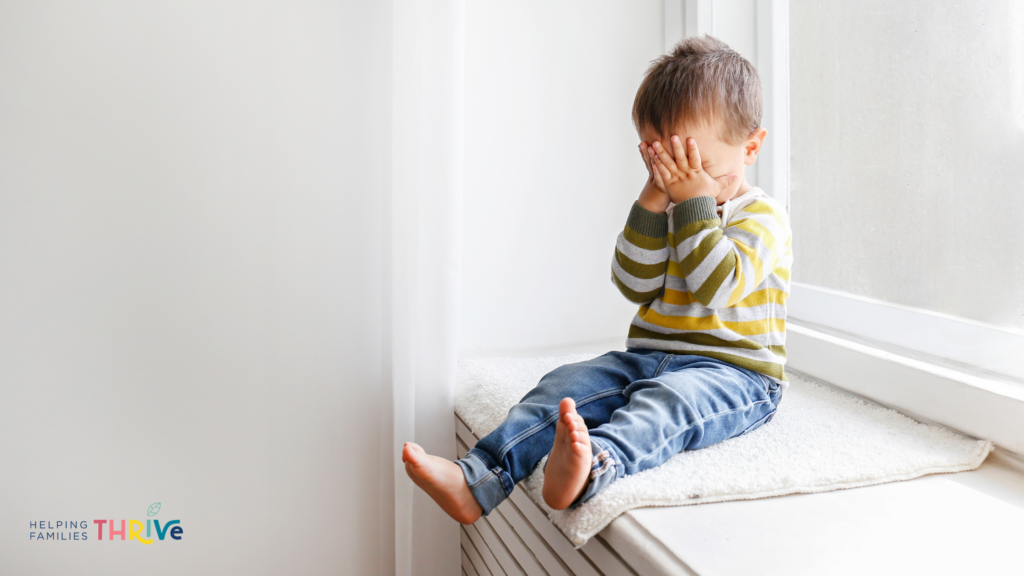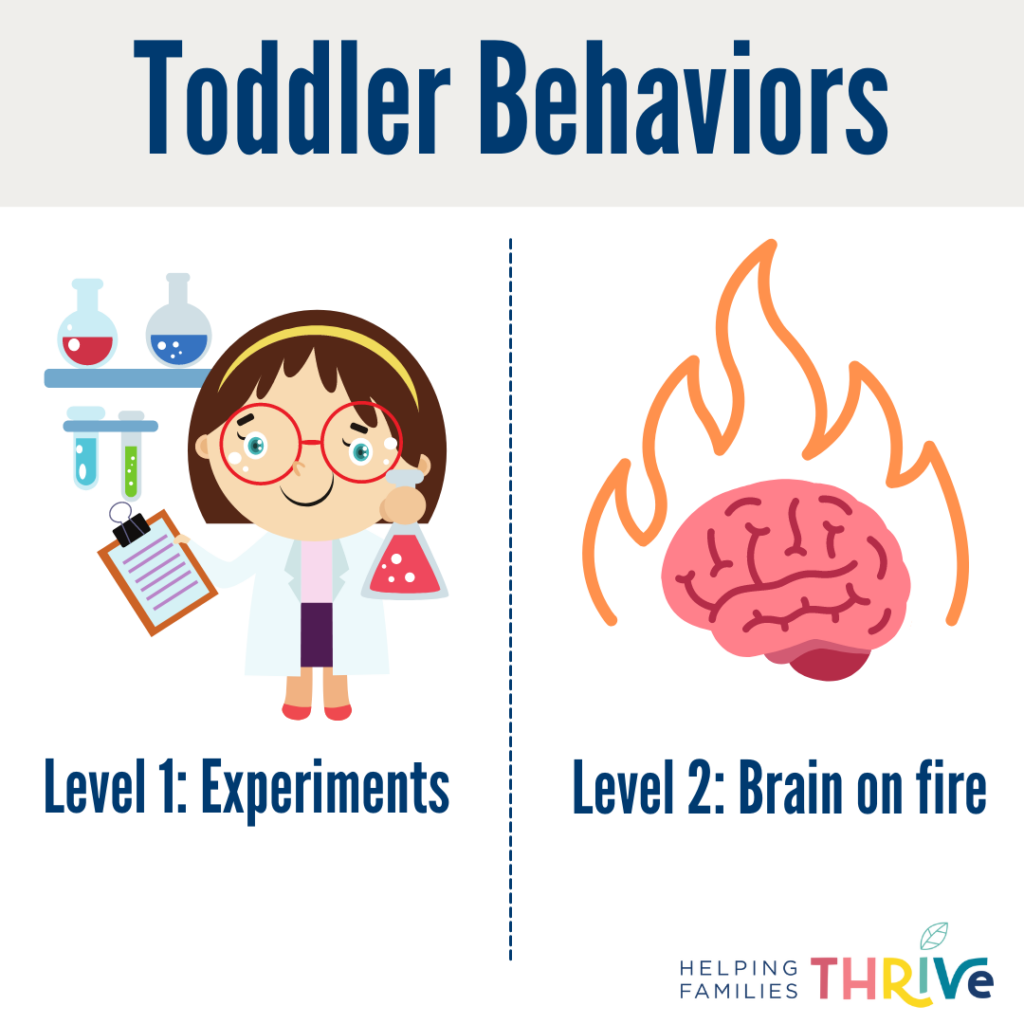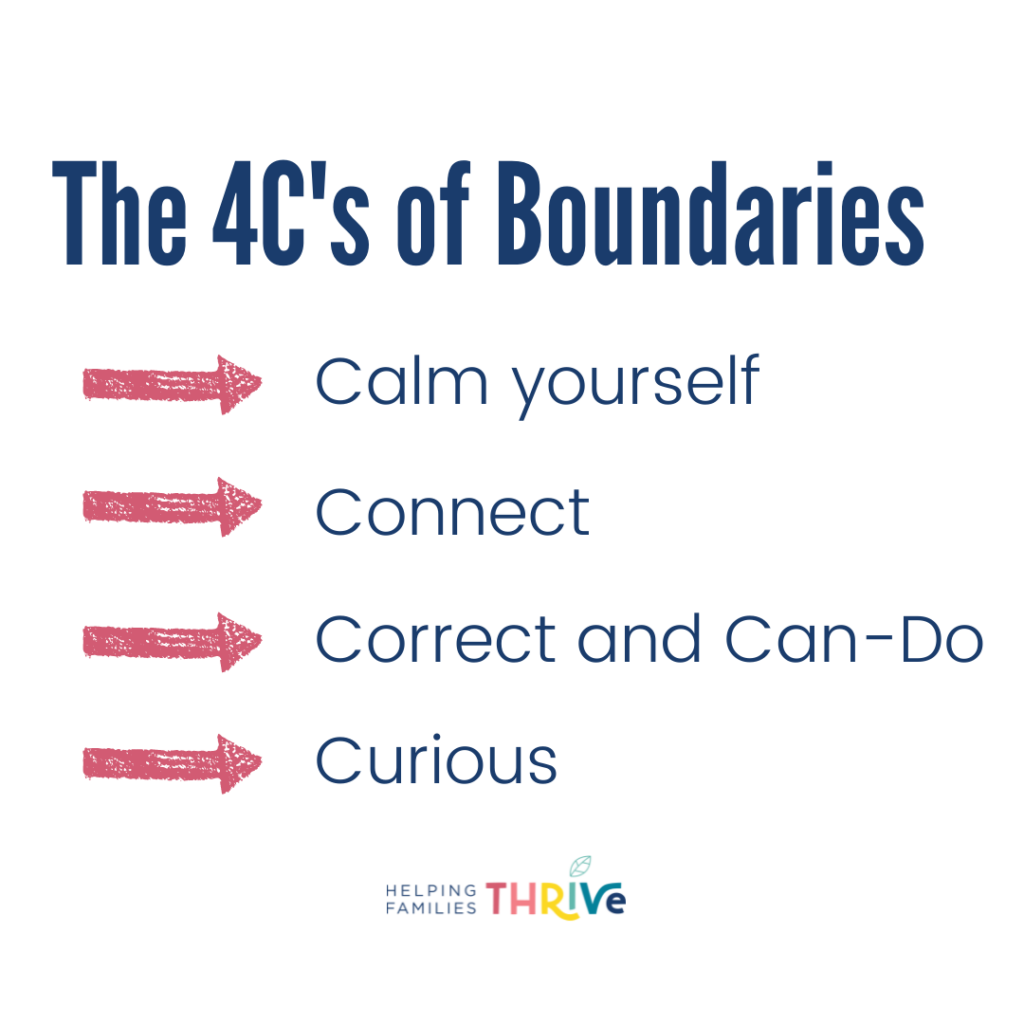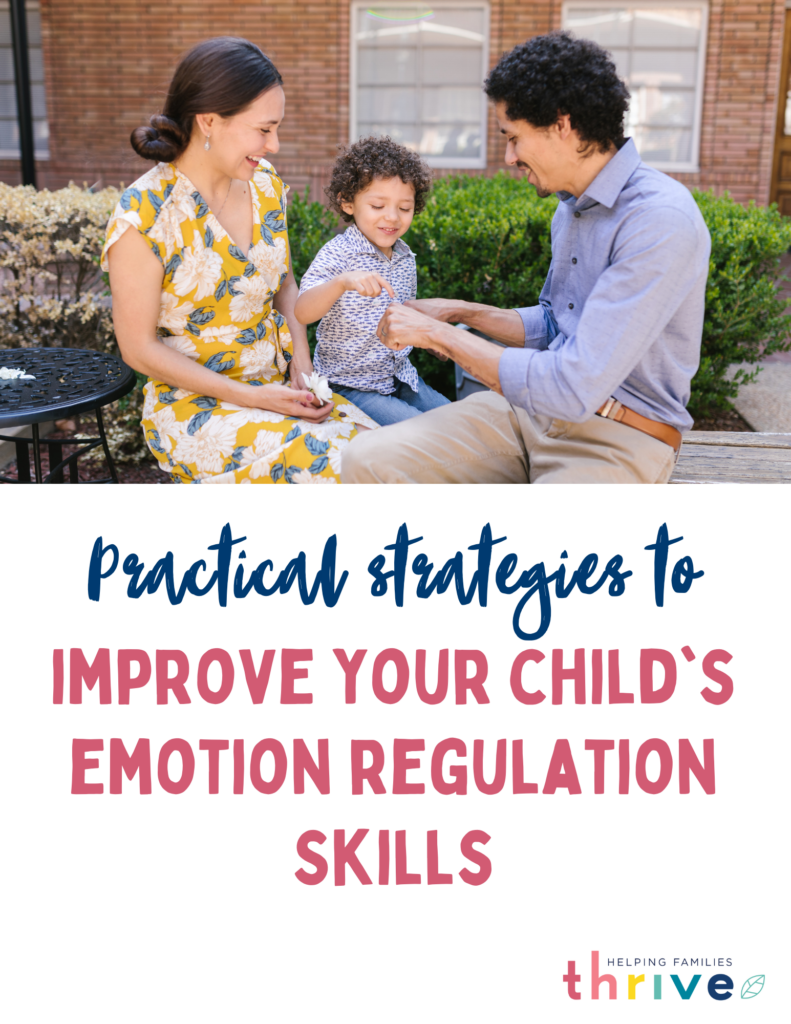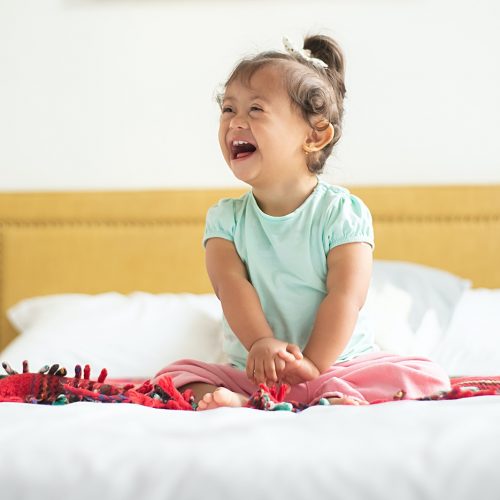The toddler years are so much fun! And, they can leave even the calmest parent feeling defeated on a daily basis. There’s a reason people use sayings like “the terrible 2’s” and “threenagers.” While it’s not very helpful to think of toddlers as terrible or bad, it is okay to acknowledge that toddler behavior can be tough to navigate!
Toddlers are in a developmental stage that includes lots of exploration and independence-seeking. This state also includes underdeveloped impulse control and language skills. This combination means we’re going to see behaviors like whining, tantrums, hitting, and saying “no” start to pop up.
So what’s a parent to do when their toddler throws toys? How do we respond to a 2-year-old wailing about a broken banana? How do we get them to stop throwing food from their high chair or saying “no” to every simple request?
The Importance of Prevention
While these questions are common, they are missing a really big part of the equation… prevention! Rather than focusing just on what to do once a challenging behavior occurs, it’s important to also learn strategies to help decrease the likelihood of these behaviors happening in the first place. Whenever we are working with parents around a challenging behavior, we always think of both prevention strategies (what to do beforehand to set the child up for success) and response strategies (how to respond in the moment to promote emotion regulation and skill building). Both of these pieces are needed to really see improvement in tricky behaviors. For a thorough exploration of the HFT Prevention and Response Framework see this post.
What To Do In The Moment
While prevention is such a huge piece of the puzzle (so don’t skip this!), the purpose of this post is to really address what parents should do in the heat of the moment once the behavior has already started.
First, let’s differentiate between two types of challenging toddler behaviors: Toddler Experiments and Brain on Fire Dysregulation. The reason we differentiate between these behaviors is that they require different responses.
1. Toddler Experiments
First, let’s discuss what to do for the first category of behaviors. Many behaviors in young kids are just kids conducting experiments and looking at cause and effect. “What happens when I throw this food off the highchair? How does mom respond? How about when I make this loud screeching sound? Ohhh, interesting! I’ll do that again.” The world is still very much an experiment!
Examples of behaviors that often fall into this category are:
- Food throwing
- Screeching
- Low-level whining
- Running away from a parent
- Rolling around during a diaper change
The go-to tool for toddler experiments is what we call Neutral and Next. This tool is to be used when there’s not significant emotional dysregulation or safety concerns, but rather the child is experimenting with their environment or looking to the caregiver for a response.
Here our primary goal is to KEEP OUR COOL. Stay neutral!
Next, comment on or redirect to the next thing. Let’s look at an example.
The situation: Toddler starts to screech loudly in a restaurant,
The urge: To snap, “shhh, stop screaming!”
The fix: Stay neutral and start to push a toy or color on paper while saying, “Oooh! I’m drawing the biggest fire truck in the world!” to redirect their attention.
The why: When we have big reactions to our toddler’s behaviors we can accidentally make them occur more frequently. Toddlers find our big reactions interesting and think “Wow! Look what I just made mama’s voice do!! Ooooh! What will happen if I do it again, but bigger?” And then round and round we go. Big reactions also accidentally teach kids that screaming is a great way to get our attention. This means that as soon as we start talking to another adult, our child might start screaming since it worked the last time.
Neutral and next reduces the likelihood this behavior becomes our child’s go-to method for getting our attention.
2. Brain On Fire Dysregulation
Now that you have a strategy for responding to toddler experiments, what do you do when your child is having strong emotions such as whining, protesting, or tantrums. This is when we break out the 4C’s of Boundaries.
- Calm Yourself: We have to first regulate ourselves before we can help our child.
- Connect: Provide validation either through words, touch or even a calming tone.
- Correct and Can-Do: Correct the behavior and remind your child of the positive alternative they can do.
- Curious: Get curious at a later time to better understand why the behavior is happening.
Putting the 4 C’s together
We’re now going to share some examples of how to use the 4 C’s all together. But before we do, here are a few important things to keep in mind. First, there are several options for how to respond on some of the steps. This is because parents are not robots. These examples are meant to be a guide rather than a rigid plan. Secondly, it’s important to remember that, just like with toddler experiments, we need to be aware of our urge to respond with BIG REACTIONS, lots of words, solutions or any type of verbal processing here. When our kids are dysregulated, we want to keep it warm, calm, short and sweet.
Example 1: The child wants Cheerios from the pantry but it’s not snack time. The child is whining and getting upset.
- Calm: Parent reminds themself, “My child is having a hard time. I can handle this.”
- Connect: “You really want some Cheerios.”
- Correct and Can-Do: Parent let’s them know it’s not time for Cheerios and directs them to what it is time to do. This could look like:
- “It’s not time for Cheerios, we can read a book or play outside.”
- “No Cheerios right now. You can have blueberries or strawberries.”
- “No Cheerios right now. We can have cheerios after diaper change. First diaper change, then cheerios.”
- Curious: Later, get curious to figure out what skill is missing and what the behavior might be communicating.
- Is the snack schedule clear?
- Do I need to keep the Cheerios out of sight?
- Is she getting hungry before snack time? Any adjustments needed?
- Am I being consistent? Do I sometimes give in and other times not?
Example 2: The child throws a block and starts to yell and kick on the floor when it won’t stack correctly.
- Calm: Parent reminds themself, “This is a big feeling that will pass! Little brain on fire. I don’t need to STOP the emotion.”
- Connect: “Ugh, Tricky blocks! You’re frustrated!”
- Correct and Can-Do: In this case the “correct” is just offering ways the child may move on or cope. This could look like:
- “I’m here if you need a hug buddy.” (sitting nearby with arms open)
- “Papa can help when you’re ready.” (pick up block and offer a little bit of help while waiting nearby).
- Curious: Later, get curious to figure out what skill is missing and what the behavior might be communicating.
- Does my child ask for help when things are tricky? Do I need to model and teach this skill?
- Does my child get frustrated easily and need support in learning persistence?
You may have noticed that neither of these examples involved unsafe behaviors like aggression, hitting, or biting. In general, you can use the same 4C’s approach, but there are some unique considerations to keep in mind when it comes to hitting/biting that warrant their own post (coming soon!).
Ride The Wave & Final Thoughts
Neutral and Next and the 4 C’s are our “go-to” strategies for handling most toddler moments. However, the most important part after ALL of these steps is learning to “ride the wave.”
We do not need to STOP every behavior and emotion. Sometimes, even if we nail each of these 4C’s and use every tool in our parenting toolbox, the big feelings or behavior will not come down right away. This doesn’t mean you failed.
Imagine yourself on a surfboard cruising over the swells and falls of your child’s feelings. You are a strong, confident and sturdy leader. The wave will swell and then come down and then you will be there with your child. You’ve got this.
For a deep dive into all things toddlers, check out our Limit Setting for Toddlers workshop here.

